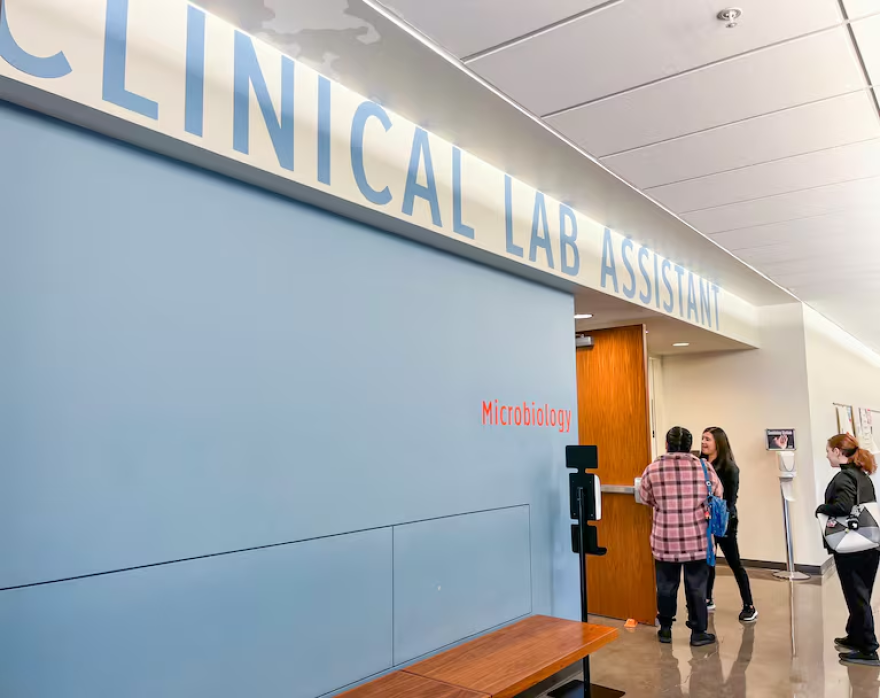Workforce Pell is less than a month old and still has a number of implementation steps ahead of it, but Oregon’s higher education and workforce leaders are already enthusiastic about how it may help students and local economies.
“We’re just so excited to even be at the starting line,” Oregon Community College Association Executive Director Abby Lee said. “Before it was just a hope and a dream.”
At its core, Workforce Pell expands federal financial aid to cover short-term, job-specific training programs. These programs include credentials and certificates that help people get entry-level positions in fields such as health care, construction and information technology.
Until now, this type of educational training has not been eligible for Pell grants — the federal government’s largest form of financial assistance for low-income college students.
Workforce Pell was part of the budget reconciliation bill that President Donald Trump signed on July 4. The legislation includes an initial set of eligibility and accountability guidelines for the new grant, including rules governing program length as well as completion, job placement and earnings benchmarks for students.
Higher education advocates, especially those with connections to community colleges, have been pushing lawmakers to support Workforce Pell for more than a decade.
Lee said the idea has had bipartisan support for years, but often stalled out due to concerns over the quality and eligibility of these short-term programs.
“As late as last fall, I didn’t think it was a possibility,” Lee said. “So to see it actually be implemented — it feels like a real game changer for students.”
Supporters of Workforce Pell believe it will expand opportunities for low-income students, especially those who are looking to gain new skills and enter the workforce on a quicker timeline than what a two- or four-year degree offers.
More than 2,000 students were awarded a certificate or credential in a career and technical education program at Oregon’s community colleges in the 2023-24 school year, according to the state’s Higher Education Coordinating Commission. Nearly 900 more students received a non-credit workforce training certificate that same year. Under current law, those non-credit bearing programs would not be eligible for Workforce Pell.
At this point it’s unclear how many students could potentially benefit from the new grant, but with new funding coming online those numbers could balloon significantly.
Workforce Pell could also be a boon for the state’s economy, helping industries with workforce shortages fill jobs with credentialed workers in a matter of months — or even weeks — rather than years. Jobs in Oregon are projected to grow by 10% over the next nine years, according to a state report released last year.
Worksystems Executive Director Andrew McGough said this is a welcome change that will benefit both employers and job seekers.
“It’s long overdue, especially for populations who have been historically marginalized or have not seen success through traditional college systems,” McGough said. Worksystems is the local workforce development board for Multnomah and Washington counties.
Congress and the president have set the stage for Workforce Pell and a target date to begin offering the first awards. It won’t be in place for the upcoming school year, but by a year from now — the 2026-27 school year — it could be. However, there’s still a lot of work to be done before students will actually see money for career-centered programs.
The U.S. Department of Education must go through a process known as negotiated rulemaking to hammer out the operational framework for the new grant before it can be implemented. This process usually takes several months to complete. Final rules for the program must be posted by Nov. 1, 2025 for it to hand out awards to students next year.
“There are a lot of details that are relatively hazy, but nothing insurmountable,” said Ryan West, the executive dean of student affairs at Chemeketa Community College. “I’m still hopeful for it, but I don’t know right out of the gate how many Workforce Pell student recipients there really will be next school year.”
This story comes to you from the Northwest News Network, a collaboration between public media organizations in Oregon and Washington.


